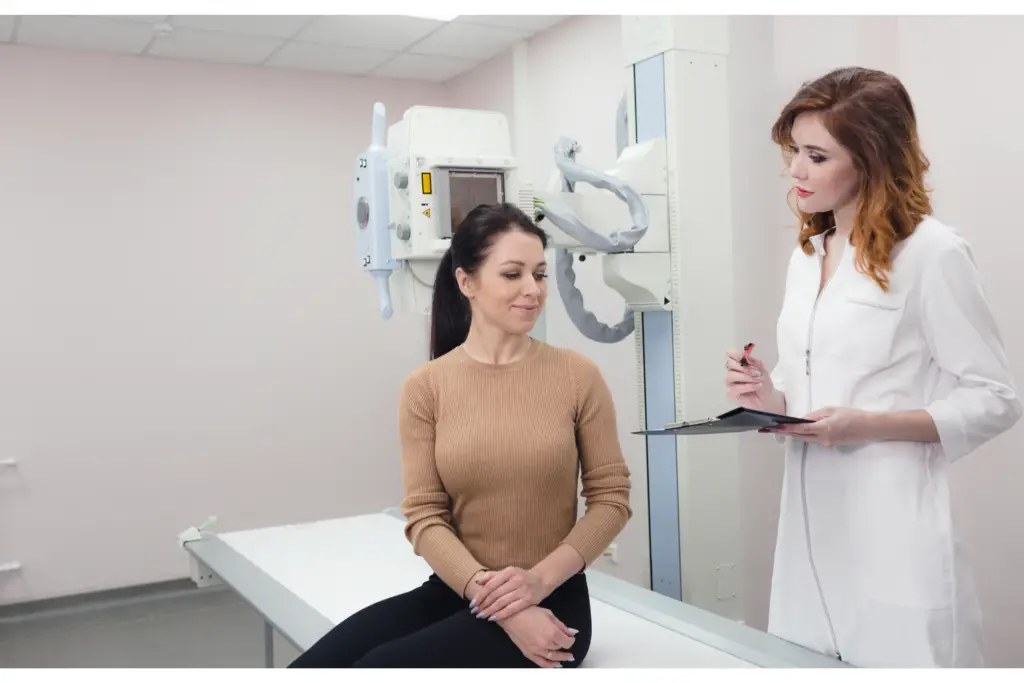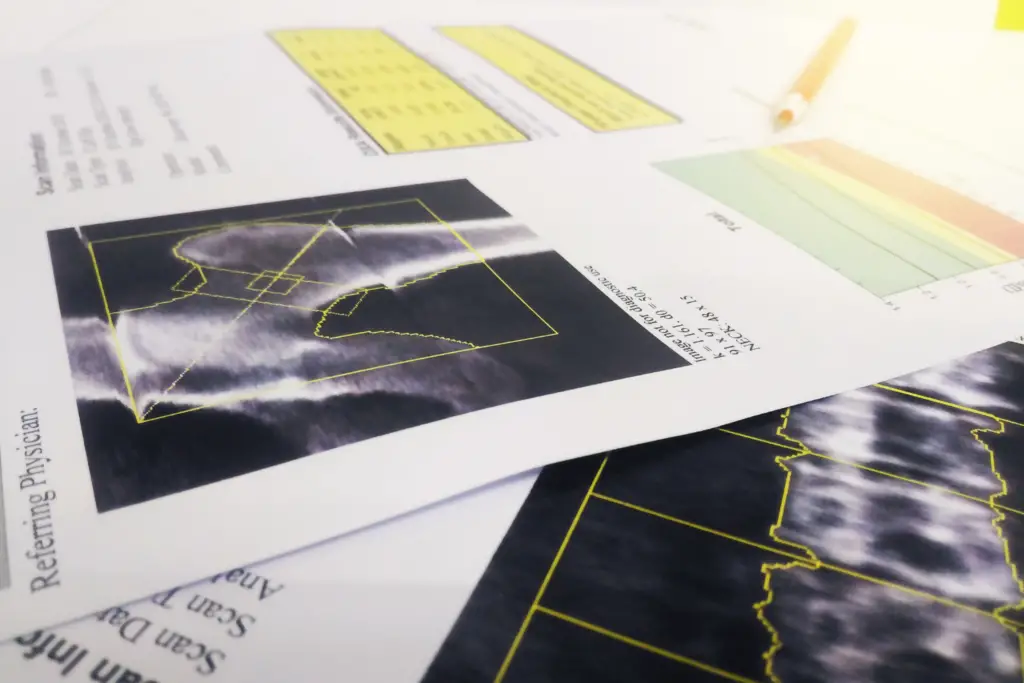In the dynamic world of healthcare, radiologic technology stands as a pivotal field, blending cutting-edge imaging techniques with compassionate patient care. Aspiring radiologic technologists embark on a journey filled with challenges, opportunities, and the potential to make a profound difference in the lives of others. This career guide aims to illuminate the path towards becoming a successful radiologic technologist, covering everything from education and training to career advancement strategies.
Education and Training:
The foundation of a career in radiologic technology begins with a solid education. Prospective technologists typically pursue an associate’s or bachelor’s degree in radiography from an accredited program.
Pursuing Accredited Programs:
Prospective radiologic technologists typically begin their journey by enrolling in accredited educational programs. These programs, offered by universities, colleges, and vocational schools, ensure that students receive a quality education and meet the eligibility requirements for certification. Accreditation is typically granted by organizations such as the Joint Review Committee on Education in Radiologic Technology (JRCERT) in the United States.
Radiography programs offer a well-rounded curriculum designed to provide students with the knowledge and skills necessary for success in the field of radiologic technology. The curriculum typically includes coursework in several key areas:
Anatomy and Physiology:
Students study the structure and function of the human body, including skeletal, muscular, cardiovascular, respiratory, and nervous systems. Understanding anatomy and physiology is essential for radiologic technologists to accurately position patients and produce high-quality diagnostic images.
Patient Care:
Radiologic technologists are responsible for ensuring the comfort, safety, and well-being of patients during imaging procedures. Coursework in patient care covers topics such as communication skills, patient assessment, infection control, and radiation protection measures.
Radiation Physics:
Mastery of radiation physics principles is essential for safe and effective use of imaging equipment. Students learn about the properties of X-rays, the interactions of radiation with matter, radiation dose calculations, and radiation safety practices.
Imaging Techniques:
Radiography programs cover a variety of imaging modalities, including X-ray, computed tomography (CT), magnetic resonance imaging (MRI), fluoroscopy, and mammography. Students learn how to operate imaging equipment, select appropriate exposure parameters, and position patients to obtain diagnostic images of high quality.
Clinical Internships:
Clinical internships or practicum experiences are integral components of radiologic technology education. These hands-on learning opportunities allow students to apply theoretical knowledge and develop practical skills in real-world healthcare settings under the supervision of experienced technologists and radiologists.
Real-World Experience:
During clinical internships, students rotate through different clinical departments, such as radiography, CT, MRI, and interventional radiology. They have the opportunity to observe and participate in various imaging procedures, interact with patients, and collaborate with healthcare professionals.
Skill Development:
Clinical internships provide students with the opportunity to refine their technical skills, enhance their critical thinking abilities, and adapt to the dynamic nature of healthcare delivery. They learn to troubleshoot equipment issues, ensure patient safety, and maintain high standards of image quality.
Professionalism:
Clinical internships also emphasize the development of professionalism, ethical conduct, and effective communication skills. Students learn to interact professionally with patients, families, and colleagues, respecting cultural diversity and confidentiality requirements.
Patient Care and Communication:
Radiologic technologists play a crucial role in patient care, ensuring that imaging procedures are performed safely, accurately, and efficiently. Effective communication and interpersonal skills are essential for building rapport with patients, obtaining relevant medical history information, and addressing patient concerns.
Empathy and Compassion:
Radiologic technologists interact with patients who may be experiencing pain, anxiety, or discomfort. Empathy, compassion, and sensitivity to patients’ needs are paramount in providing supportive care and creating a positive imaging experience.
Clear Communication:
Clear and concise communication is essential for explaining imaging procedures, obtaining informed consent, and providing instructions to patients. Radiologic technologists must communicate effectively with patients of all ages, cultural backgrounds, and cognitive abilities.
Patient Advocacy:
Radiologic technologists serve as advocates for patient safety and well-being. They ensure that patients are positioned correctly for imaging procedures, use appropriate radiation protection measures, and receive necessary support throughout the imaging process.

Lifelong Learning and Professional Development:
The field of radiologic technology is constantly evolving, with advances in technology, imaging techniques, and patient care practices. Radiologic technologists must commit to lifelong learning and professional development to stay current with industry trends and maintain competence in their field.
Continuing Education:
Radiologic technologists participate in continuing education programs, workshops, conferences, and online courses to expand their knowledge and skills. Continuing education requirements may vary depending on state regulations, professional certifications, and employer policies.
Specialty Certification:
Some radiologic technologists pursue additional certification in specialized areas of practice, such as CT, MRI, mammography, or nuclear medicine. Specialty certification demonstrates expertise in a particular imaging modality and may enhance career opportunities and earning potential.
Professional Organizations:
Radiologic technologists can join professional organizations such as the American Society of Radiologic Technologists (ASRT) or the Radiological Society of North America (RSNA) to access resources, networking opportunities, and professional development activities. These organizations provide support, advocacy, and leadership opportunities for radiologic technologists at all stages of their careers.
Associate’s or Bachelor’s Degrees:
Radiologic technology programs commonly offer associate’s or bachelor’s degrees in radiography. The choice between these degree levels often depends on individual career goals and the specific requirements of employers or licensing boards.
Quality Assurance:
Accredited programs undergo rigorous evaluation to ensure that they meet established standards for faculty qualifications, curriculum content, clinical education experiences, and educational resources. By choosing an accredited program, students can be confident that they are receiving a comprehensive and high-quality education.
Certification and Licensure:
Upon successfully completing their education in radiologic technology, aspiring technologists embark on the next crucial step towards establishing their professional credentials: obtaining certification and licensure. These processes are essential for ensuring that radiologic technologists meet established standards of competency, professionalism, and ethical conduct in their practice.
Certification:
Certification is a formal recognition of an individual’s proficiency and competence in a particular field of practice. For radiologic technologists in the United States, certification is typically conferred by the American Registry of Radiologic Technologists (ARRT), although other accrediting bodies may exist in different countries or regions. The ARRT is widely recognized as the standard-setting organization for radiologic technologists in the U.S., establishing rigorous standards for education, training, and certification.
Examination Requirements:
One of the primary requirements for ARRT certification is passing a comprehensive examination that assesses the candidate’s knowledge and skills in radiologic technology principles and practices. The examination covers a broad range of topics, including anatomy, physiology, patient care, radiation physics, imaging techniques, and radiation protection. Candidates must demonstrate proficiency in these areas to qualify for certification.
Continuing Education:
In addition to passing the certification examination, radiologic technologists must engage in ongoing professional development to maintain their certification. The ARRT requires technologists to complete continuing education credits periodically to stay current with advancements in the field and demonstrate their commitment to lifelong learning. Continuing education ensures that certified technologists remain competent, informed, and capable of providing high-quality patient care.
Licensure:
While certification from organizations like the ARRT establishes professional competency, licensure is a legal requirement imposed by state governments to practice as a radiologic technologist in certain jurisdictions. Licensure ensures that technologists meet specific educational, clinical, and examination criteria mandated by state regulatory agencies, thereby safeguarding the public interest and promoting patient safety.
State-Specific Requirements:
Licensure requirements vary from state to state, but they typically involve completing an accredited educational program, obtaining certification from a recognized accrediting body such as the ARRT, and passing a state-administered licensure examination. Some states may also require technologists to undergo background checks, submit documentation of clinical experience, or fulfill additional training requirements.
Scope of Practice:
Licensure defines the scope of practice for radiologic technologists within a particular state, outlining the types of procedures they are authorized to perform, the settings in which they can practice, and any restrictions or limitations on their practice. Licensure ensures that technologists adhere to established standards of care, ethical conduct, and professional behavior while providing imaging services to patients.
Renewal and Maintenance:
Like certification, licensure typically requires renewal at regular intervals to ensure that technologists remain current with evolving standards and regulations. Technologists must fulfill continuing education requirements, pay renewal fees, and adhere to any other stipulated conditions to maintain their licensure status. Renewal ensures that licensed technologists remain competent, qualified, and accountable to regulatory authorities and the public.
Job Duties and Responsibilities:
Radiologic technologists are integral members of the healthcare team, playing a pivotal role in the diagnosis and treatment of various medical conditions. Their responsibilities extend far beyond operating imaging equipment, encompassing a diverse array of duties aimed at ensuring patient safety, comfort, and well-being throughout the imaging process.
Performing Diagnostic Imaging Procedures:
Radiologic technologists are skilled in the acquisition of diagnostic images using a variety of imaging modalities, including X-ray, computed tomography (CT), magnetic resonance imaging (MRI), and mammography. They work closely with radiologists and other healthcare providers to perform imaging studies that aid in the diagnosis, monitoring, and treatment of diseases and injuries.
- X-rays: Technologists capture images of bones, organs, and soft tissues using X-ray equipment, providing valuable diagnostic information for detecting fractures, tumors, and other abnormalities.
- CT Scans: Technologists operate CT scanners to obtain cross-sectional images of the body, which are used to visualize internal structures with exceptional clarity and detail.
- MRI: Technologists utilize MRI scanners to generate detailed images of the body’s soft tissues, organs, and vascular structures, assisting in the diagnosis of neurological, musculoskeletal, and cardiovascular conditions.
- Mammography: Technologists specialize in breast imaging, performing mammograms to screen for and diagnose breast cancer in women.
Ensuring Patient Safety and Comfort:
Patient safety is paramount in radiologic technology, and technologists are responsible for ensuring that imaging procedures are conducted safely and efficiently. They adhere to strict protocols and safety guidelines to minimize radiation exposure and mitigate potential risks to patients, staff, and themselves.
- Positioning and Immobilization: Technologists carefully position patients on imaging tables and immobilize body parts as necessary to obtain optimal imaging views while minimizing patient discomfort and movement artifacts.
- Radiation Safety: Technologists implement radiation protection measures, such as using lead aprons, shields, and collimators, to minimize radiation exposure to patients and themselves during imaging procedures.
- Emergency Response: Technologists are trained to respond swiftly and effectively to medical emergencies that may arise during imaging procedures, ensuring the safety and well-being of patients in critical situations.
- Providing Compassionate Care and Communication:In addition to their technical duties, radiologic technologists serve as frontline caregivers, providing emotional support, reassurance, and guidance to patients undergoing imaging procedures. They cultivate a compassionate and patient-centered approach to care, fostering trust and rapport with individuals from diverse backgrounds and healthcare settings.
- Patient Education: Technologists explain imaging procedures to patients in clear and understandable terms, addressing their questions, concerns, and anxieties to alleviate apprehensions and promote cooperation.
- Empathy and Sensitivity: Technologists demonstrate empathy, sensitivity, and cultural competence in their interactions with patients, recognizing and respecting individual preferences, beliefs, and values.
- Confidentiality and Professionalism: Technologists uphold strict standards of confidentiality and professionalism, safeguarding patient privacy and dignity at all times. They maintain accurate medical records, ensure the secure handling of patient information, and adhere to ethical and legal principles governing healthcare practice.
Career Opportunities and Advancement:
The field of radiologic technology offers a rich tapestry of career opportunities and avenues for professional growth, catering to individuals with diverse interests, skills, and aspirations. From entry-level positions to advanced leadership roles, radiologic technologists have the opportunity to carve out fulfilling and dynamic careers in various healthcare settings.
Diverse Employment Settings:
Radiologic technologists are in high demand across a spectrum of healthcare settings, including hospitals, clinics, imaging centers, and outpatient facilities. They play a vital role in supporting diagnostic and therapeutic interventions, collaborating with multidisciplinary teams to deliver comprehensive patient care. Opportunities abound in both urban and rural areas, offering technologists the flexibility to choose environments that align with their preferences and career goals.
- Hospitals: Many radiologic technologists begin their careers in hospital settings, where they perform a wide range of imaging procedures and collaborate closely with physicians, radiologists, and other healthcare professionals.
- Clinics and Imaging Centers: Technologists may also work in specialized clinics or imaging centers, focusing on specific modalities such as MRI, CT, mammography, or interventional radiology. These settings often offer a more focused and streamlined approach to imaging services, providing opportunities for specialization and expertise development.
- Outpatient Facilities: Ambulatory surgery centers, urgent care clinics, and outpatient rehabilitation facilities also employ radiologic technologists to perform imaging studies, contributing to efficient and patient-centered care delivery in community-based settings.
Specialized Practice Areas:
Radiologic technology encompasses a breadth of specialized practice areas, each offering unique challenges, rewards, and opportunities for professional development. Technologists can choose to specialize in areas such as:
- General Radiography: Performing routine X-rays and diagnostic imaging studies to assess bone fractures, organ function, and pathology.
- Fluoroscopy: Utilizing real-time imaging techniques to visualize dynamic processes within the body, such as gastrointestinal studies and cardiac catheterizations.
- Nuclear Medicine: Administering radiopharmaceuticals and conducting imaging procedures to evaluate organ function, detect diseases, and monitor treatment responses.
- Radiation Therapy: Delivering targeted radiation treatments to cancer patients, collaborating with radiation oncologists to plan and administer therapy regimens.
Career Advancement Opportunities:
Radiologic technologists can pursue numerous pathways for career advancement and professional growth, leveraging their skills, experience, and dedication to expand their horizons and assume leadership roles within the field.
- Lead Technologist: Experienced technologists may transition into lead or supervisory roles, overseeing daily operations, coordinating workflow, and providing mentorship to junior staff members.
- Department Manager: Technologists with strong leadership skills and managerial acumen may advance to department manager or administrative positions, where they oversee staffing, budgeting, quality assurance, and strategic planning initiatives.
- Educator: Some technologists choose to share their knowledge and expertise by pursuing careers in education, teaching future generations of radiologic technologists in academic programs or clinical settings.
- Specialized Imaging Specialist: Technologists can further specialize in advanced imaging modalities or subspecialty areas, such as cardiac imaging, neuroimaging, or pediatric radiology, by obtaining additional certifications and training.

Continuing Education and Professional Development:
In a rapidly evolving field like radiologic technology, staying abreast of technological advancements, best practices, and regulatory changes is paramount for career growth and professional competence. Technologists are encouraged to engage in continuing education activities, pursue advanced certifications, and seek opportunities for skill enhancement and professional networking.
- Continuing Education: Technologists participate in continuing education programs, seminars, workshops, and online courses to stay current with emerging technologies, evidence-based practices, and regulatory requirements.
- Advanced Certifications: Obtaining specialized certifications, such as advanced imaging credentials or subspecialty certifications, can enhance technologists’ marketability, expand their scope of practice, and open doors to new career opportunities.
- Professional Networking: Technologists can benefit from networking with peers, industry professionals, and professional organizations such as the American Society of Radiologic Technologists (ASRT) or the Radiological Society of North America (RSNA), which offer resources, support, and advocacy for technologists at all stages of their careers.
FAQs
- Are there any risks associated with being exposed to radiation as a radiologic technologist?
- This question addresses concerns about occupational radiation exposure and the measures in place to ensure the safety of technologists while performing imaging procedures.
- What are the opportunities for career advancement in specialized areas like interventional radiology or radiation therapy?
- This question explores career pathways beyond general radiography and highlights opportunities for specialization and professional growth in advanced practice areas.
- How does the role of a radiologic technologist differ in outpatient settings compared to hospital environments?
- This question delves into the nuances of practice settings and the unique responsibilities and challenges faced by technologists working in outpatient clinics, imaging centers, and other non-hospital settings.
- What emerging technologies or trends are shaping the future of radiologic technology?
- This question explores the evolving landscape of medical imaging, including advancements in technology, such as artificial intelligence (AI), 3D printing, and hybrid imaging modalities, and their potential impact on the practice of radiologic technology.
- What are the requirements and process for obtaining specialty certifications, such as CT or MRI, and how do they differ from general radiography certification?
- This question provides insight into the specific educational and experiential requirements for obtaining certifications in specialized imaging modalities and the benefits of pursuing advanced credentials in these areas.
Conclusion:
Becoming a radiologic technologist is not merely a career choice; it’s a commitment to excellence, compassion, and lifelong learning. As you embark on this rewarding journey, remember that success is not measured solely by technical proficiency but by the positive impact you have on the lives of patients and the healthcare community. By pursuing quality education, obtaining certification, embracing continuous learning, and embracing opportunities for growth, you can build a fulfilling and meaningful career as a radiologic technologist.

